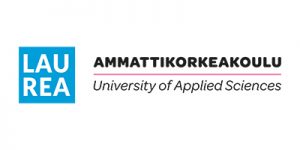Language courses
Higher education studies can be demanding, especially for non-native speakers. An adequate array of language studies is crucial for student success. Ideally, the courses are incorporated in the curriculum so that it is no extra burden for the students. The students should be given the choice of entering a language course that is at a suitable level for their language proficiency.
Finnish as a second language – an example from Laurea, Finland
- Laurea University of Applies Sciences in Finland provides two types of degree programmes. Students can either choose to study on a degree programme where the language of tuition is Finnish or on a degree programme that is taught in English.
- In the English-language degree programmes Finnish is incorporated into the curriculum for those students, whose first language is other than Finnish. These students are foreign students, who have lived in Finland a number of years or have just arrived in Finland with the purpose of completing a bachelor’s degree.
- In order to ensure each student is offered the right level in terms of their Finnish language competence, the Finnish teacher meets the students individually and shortly interviews them to suggest the right level to the student.
- This process ensures that each student can start their Finnish-language studies at the right level and proceed according to their personal needs.
- The process also saves time as the students are directed to the right level and right course in the first week of their studies.
- Sometimes an appropriate course is not offered in the first term but the student is directed to take the course when it is offered again.
- The target level of the Finnish courses varies from A1 to B2 according to the Common European Framework of References for Languages.
Studying in English – an example from Laurea, Finland
- Laurea University of Applies Sciences in Finland provides two types of degree programmes. Students can either choose to study on a degree programme where the language of tuition is Finnish or on a degree programme that is taught in English.
- In the English-language degree programmes where the language of instruction is English, English-language and communication studies are incorporated into the curriculum so that they support the study success of the students, whose first language is other than English. This is the case for most students, as very rarely native English speakers enter the degree programmes.
- In the degree programme in Service Business Management, which is a bachelor-level degree programme, two different English courses are offered to all students.
- The first course is offered in the first term of studies and it is called Project Management and Communication and the second course, again, in the second term. The second course is titled Professional Communication Skills. Each course is equivalent to 5 ECTS.
- The course objectives of Project Management and Communication are as follows:
- The student is able to
– plan, implement and evaluate a practical project in multidisciplinary cooperation
– work in an appropriate way in multicultural organisations and networks
– acquire and use information to support development, and use ICT tools
– communicate appropriately and in a goal-oriented way in the communication and documenting situations required by the project - The course objectives of Professional Communication Skills are:
- The student is able to
– communicate as a professional in field, specific tasks and intercultural contexts
– produce effective spoken and written texts using an appropriate style and register
– demonstrate knowledge of essential terminology needed in working life
– apply principles of interpersonal and organizational communication - Completion of these two courses ensures the student is able to follow tuition effectively in English. The courses support the student’s studies in other courses, too, as they provide tools for professional and academic communications, such as referencing principles and the core elements of effective spoken and written communication.
Swedish as a second language – an example from Laurea, Finland
- Finland is officially a bilingual country and the law gives that each Finnish student needs to study the other official language in university. The two official languages are Finnish and Swedish.
- Finnish-speaking students, irrespective of the language of tuition on the degree programme, have to study Swedish. (Swedish-speaking students, again, have to study Finnish at university.)
- Before the students start their studies, they are directed to take a language proficiency test online. The test is arranged as a multiple choice question test with 50 questions to answer. The test reviews students’ grammar skills as well as their command of basic vocabulary in Swedish.
- If the student scores less than 26 points in the multiple choice, s/he is directed to take a preparatory course in Swedish either simultaneously with the 5-credit compulsory Swedish course or prior to taking the Swedish course.
- The preparatory course ensures students have a chance to update their skills in order to be able to follow tuition successfully in the mandatory Swedish course.
- The target level of the mandatory Swedish course is B1 according to the Common European Framework of Reference for Languages.

Source: Laurea University of Applied Sciences, Finland
